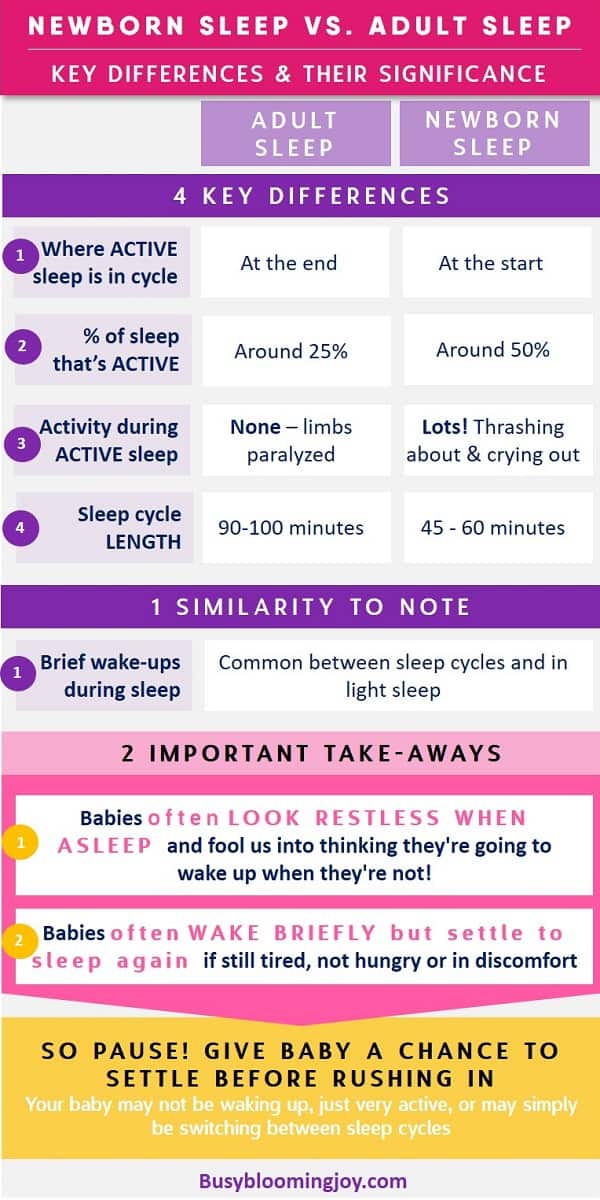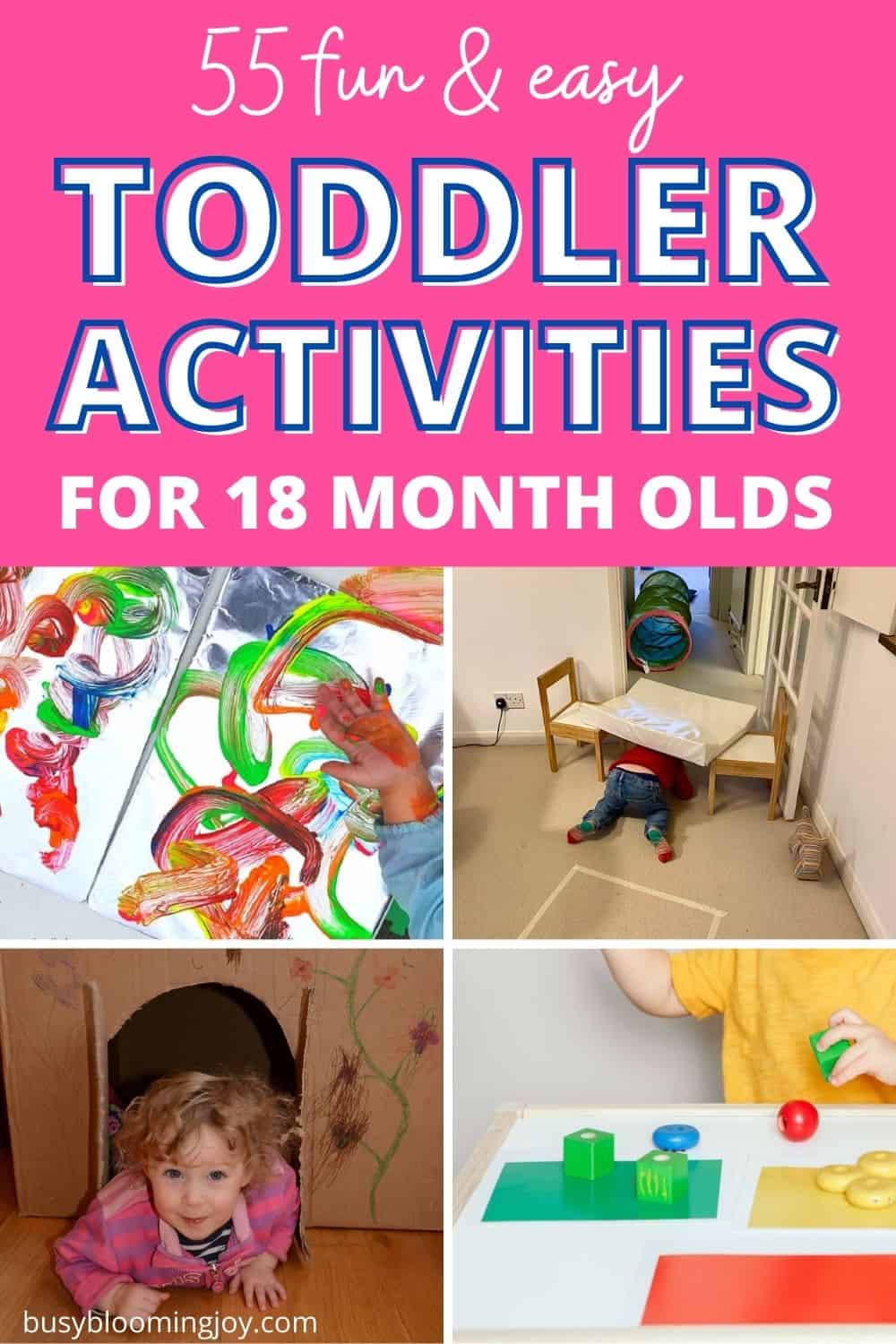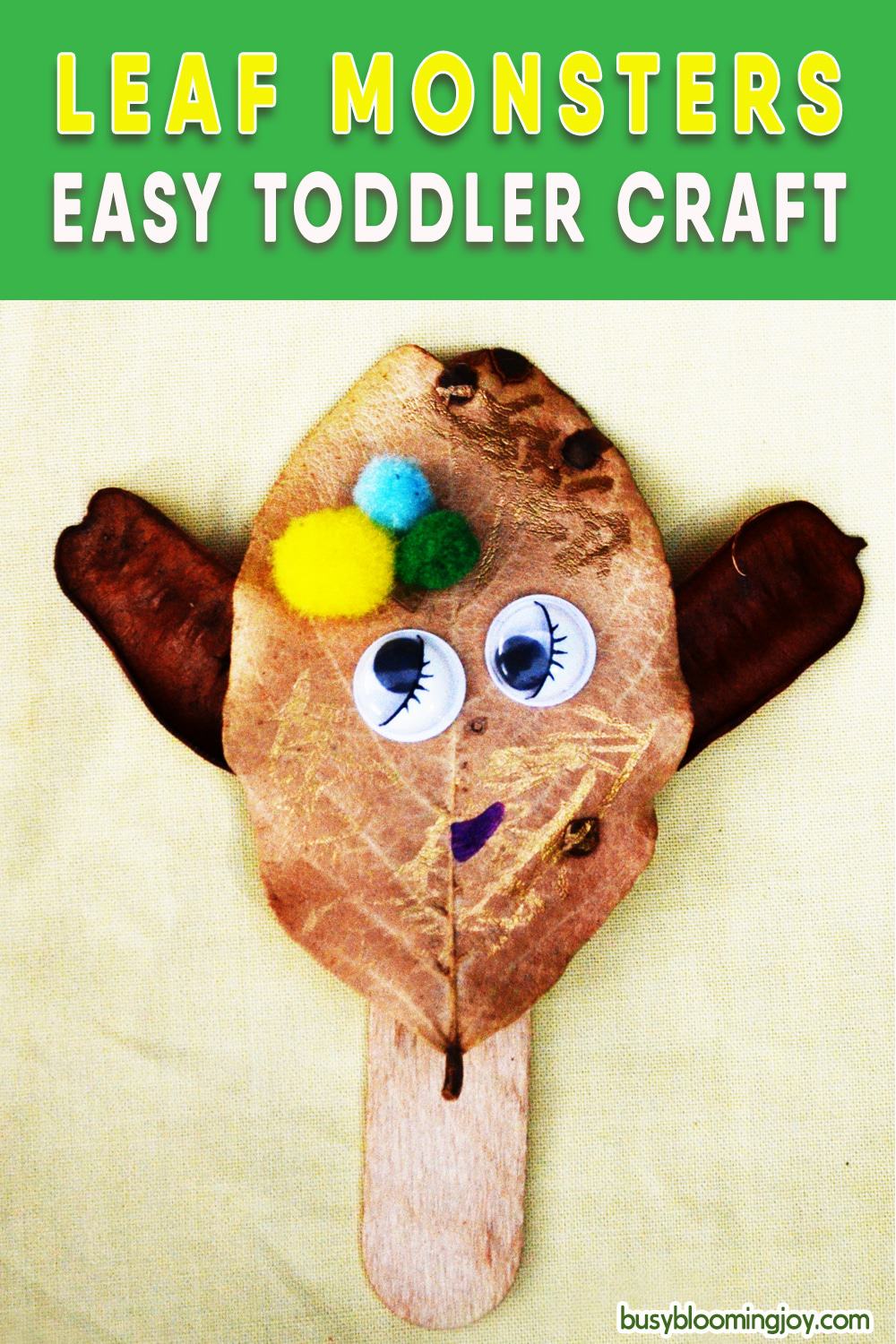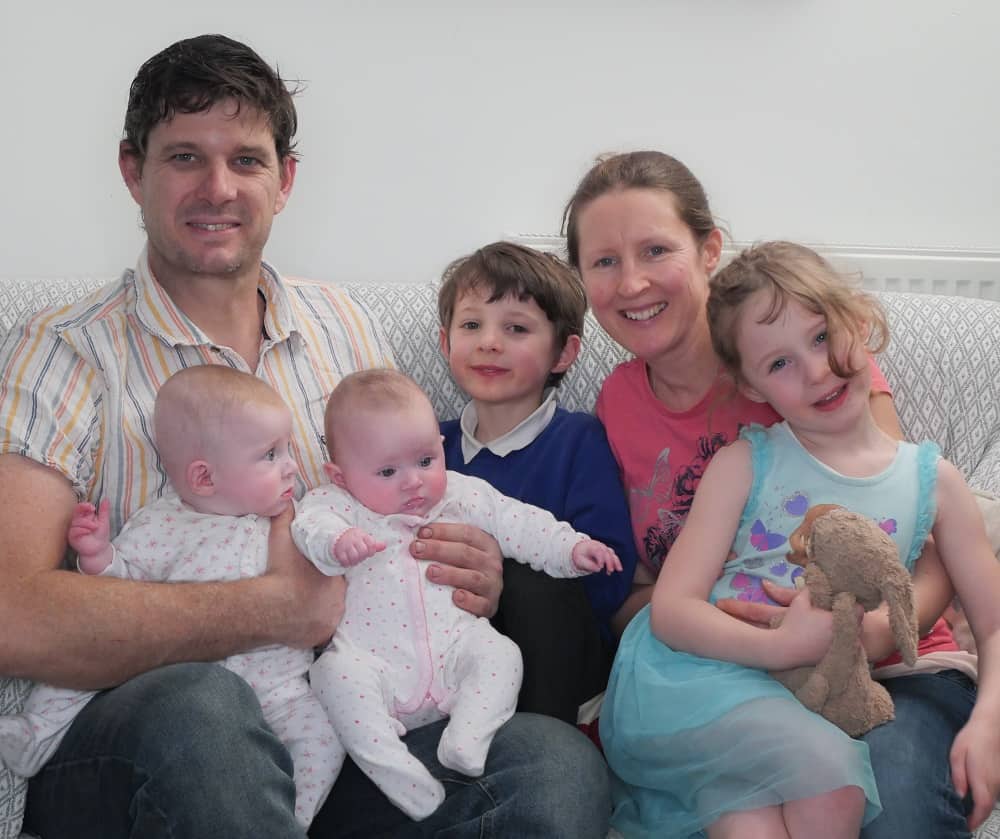If you have a newborn you’ve probably started to wonder about the sleeping through the night question.
When do babies sleep through the night? How can you get your baby to sleep through the night? (And quickly!)
But there’s something worth knowing when it comes to newborn sleep:
Your baby will wake many times a night, every night, it’s normal!
Don’t panic! It doesn’t mean you will never ‘sleep through the night’ just that baby will need to learn a few things first, to allow you to. Getting a good nights sleep and teaching your baby some healthy sleep habits are well within anyone’s reach.
It can be done.
I did it.
Many of the moms I spoke to in my baby sleep investigation did it too. In fact, it was during these discussions that I realized how important this one learning is.
There was one tip that moms just keep repeating. (And there’s scientific evidence to support it.)
You can read the baby sleep stories from these 20 moms here:
- When do babies sleep through the night? 20 real-life stories & top tips shared
- Wondering how to get baby to sleep through the night? 20 moms share their baby sleep stories & reveal their top tips
THIS tip was the one that moms kept repeating.
It starts by understanding why no one truly sleeps through the night. We don’t. Our babies don’t.
Table of Contents
ToggleScience says no one TRULY sleeps through
If you’re thinking that sleeping through means not waking at any point, then no one truly ‘sleeps through the night’.
You’re probably aware of this but maybe hadn’t thought of it up until now and considered why this is important when thinking about your baby.
Waking briefly, multiple times is a survival mechanism
Both as adults and as babies, we experience several brief moments of wakefulness, which is an essential survival mechanism.
As adults, we will be mostly unaware of these moments and quickly fall back to sleep. But if there’s any disturbance, either internal or external, then the brain registers this and we will wake fully to resolve it.
EXTERNAL disturbances
An external disturbance might be a loud noise or a thump to your leg. After investigating this disturbance, ‘Was it the dog barking?’ ‘Was that my other half kicking me or my toddler climbing into bed with me’ you can then consciously decide what to do. Investigate what the dog’s barking at, kick your other half back…. etc
In this way, you’re able to ‘check-in’ on potential threats.

INTERNAL disturbances
An internal disturbance might be the need to go to the loo or have a drink. No prizes for guessing how these can be resolved…
Babies wake MORE frequently & are MORE easily disturbed
During a sleep cycle, both adults and babies cycle between REM sleep, the lightest sleep stage termed ‘active’ sleep in babies, and progressively deeper stages of sleep.
Other than that the sleep patterns and cycles of a newborn baby are very different from that of an adult. In brief:
Differences between adult & newborn sleep
- Newborn sleep starts in ‘active’ sleep (the equivalent to REM in adults) whereas the adult sleep cycle ends in REM
- Newborns are in active sleep 50% of the time (vs. 25% in adults)
- When inactive sleep, newborns are mentally and physically active while adults are inactive
- Newborn sleep cycles are shorter
For more detail about newborn sleep patterns, check out this post:
Newborn sleep patterns: decoded and demystified for healthy sleep habits
It’s between sleep cycles and during lighter stages of sleep when we are most easily disturbed. So because newborns have shorter sleep cycles (#4) and spend so much more time in active sleep (#2) they are more easily disturbed and likely to wake fully.
This high % of light sleep a crucial survival tactic to newborns
Just like in adults, waking in the night and/or coming into light sleep is a protective mechanism. It allows the brain to check-in and assess potential threats.
But for babies, there’s a particular issue they need protecting against: oxygen deprivation.
Babies have an immature hypoxic ventilatory response (HVR) which means that they have limited ability to breathe quicker when oxygen levels are reduced. As a result, babies are more at risk of oxygen deprivation.
Spending more time in ‘active’ sleep (the lightest sleep stage) allows more opportunity for the brain to recognize this internal disturbance and wake baby up.
This was tested under laboratory conditions in this research. The impact of slightly reduced oxygen levels on different stages of newborn sleep was investigated. While babies easily woke from lighter sleep stages, they frequently failed to wake when in the deepest sleep stage (quiet sleep).
So a lot of light sleep is crucial to newborns.
Other disturbances that babies experience
Since humans are born so developmentally immature, there are many other internal discomforts that help protect a newborn.
The most important ones are hunger, being too hot or too cold and illness. Excess gas, reflux and teething are other common discomforts that will wake them or keep them awake on waking.
Newborns are also very sensitive to external disturbances, due to the protective and primitive startle or Moro reflex. (It’s more likely that their own body movement of the reflex will wake them, rather than the noise, light or other environmental change that initiated the reflex in the first place.)
You can read more about the Moro Reflex here: The Moro Reflex Uncovered: Everything You Need To Know!
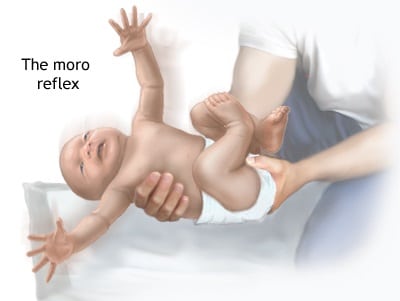
Since as parents, we can control temperature and minimize the Moro Reflex, hunger is one of the main reasons babies wake at night.
The other discomforts of reflux/gas and illness will likely need our attention.
For many of these wakings, baby should quickly settle back to sleep
If you allow her to by pausing…
We just want to love our babies and tend to their every need. So it’s just the most natural thing in the world to want to rush to your baby , swoop in and pick her up soon as she’s awake.
Don’t!
Don’t rush in, wait a moment. Pause. Just a few minutes.
If baby is still tired and not hungry or in any discomfort chances are he or she should go back to sleep!
Give your baby a chance to settle before rushing in.
Newborns are restless and noisy and may even vocalize when sleeping
The other key difference between newborn and adult sleep that’s relevant is #3 from the list:
When in ‘active’ sleep, newborns are mentally and physically active
Adults are physically INACTIVE in REM sleep (due to the neurological barrier that temporarily paralyzes the limbs, thought to prevent dreams being acted out). But in newborns, this barrier has not developed so they move a lot!
They twitch, wiggle, stretch, and thrash. They may frown or smile, or launch into a burst of sucking movements. They may vocalize too (Source)
So the potential to misread your baby’s cues is enormous.
It’s just as tempting to think eyes opening is a sign your baby is waking from her sleepy slumber. Look at this newborn, pulling faces, eyes opening and shutting. It would be so tempting to pick her up or lean in and start talking to your baby.
When transitioning between sleep cycles babies may ‘fuss’ or cry
Your baby may cry out when moving from light stage of ‘active’ sleep to the deepest stage of ‘quiet’ sleep. They may seem to be crying in their sleep. They’re not awake but moaning and whinging.
We want to shield our little ones from danger, reduce their discomfort, stop their cries and console their distress.
Pause before responding…
Soft, whingey cries may well subside after a few minutes.
If you do go to baby, you will probably find eyes tightly shut. Resist the urge to pick baby up if she’s asleep. Wait to see if the cries subside.
By picking your newborn up without pausing first you may well disturb her and wake her up unnecessarily. Then the temptation is to feed, rock or cuddle her back to sleep…
If this happens frequently, your baby will become accustomed to this way of falling back to sleep and a sleep association can develop.
Cries that escalate, becoming louder and more upset, probably mean baby does need you. So do what you need to do.
Pausing will be worth it in the long run… a few minutes of fussing vs. more drastic measures later on?
‘Pausing’ is the key to baby sleeping through the night
If baby stirs or cries out, opens eyes or thrashes about…
PAUSE FIRST!
- First, check your baby is actually awake – your baby may just be in active sleep and you may inadvertently disturb her by picking her up.
- Second, if awake, give baby a chance to settle herself – if still tired, not hungry or in any discomfort, she may well drift off back to sleep with no disturbance (i.e. you rushing in and picking her up!)
This is key to getting your baby to sleep for longer periods and eventually through the night. If you do inadvertently disturb baby and wake her up, you may then find yourself aiding her back to sleep…. If you presume hunger is the cause of waking and offer milk, but baby is actually still tired, you will likely end up feeding to sleep.
This is the first step towards developing a sleep association, in this case, a feeding-to-sleep association. By pausing first, you should be able to avoid this.
‘Pausing’ is also key to longer naps
Does your baby often wake up after 45 minutes in the day?
As we’ve established, transitioning between sleep cycles is when baby is most easily disturbed. If there’s anything to disturb your baby at the 40-50 minute mark, it’s likely that your baby will wake.
That’s why the ideal sleep environment for a newborn is as dark as possible (use black-out curtains) and uninterrupted from noise (use background music or white noise to drown out sudden door slams etc). In addition, a swaddle prevents the Moro Reflex from disturbing baby.
The other big disturbance that will wake your baby is you!
Resist the urge to rush in and pick your baby up at the first stir. Allow baby to settle back to sleep.
‘Pausing’ encourages self-soothing
By pausing you are encouraging baby to settle back to sleep without assistance (such as nursing and rocking). Settling to sleep independently is often termed ‘self-soothing’.
A baby who relies on nursing or rocking to fall asleep (and is unable to self-soothe) is said to have a ‘sleep association’. There’s nothing intrinsically wrong with this and many moms love the experience of their little one falling asleep while feeding or in their arms.
But it can become a problem for an exhausted mom who cannot get a decent stretch of uninterrupted sleep, because every time baby wakes the only way she will fall back to sleep is with a feed.
Sleep associations can be avoided by ‘pausing’ at an early age
Since sleep associations develop around 3-4 months, when newborn sleep begins to mature, if you start to ‘pause’ early on, you have a good chance of avoiding sleep associations.
I did this with both my babies and both were self-soothing before the 3-month mark (and sleeping through the night). Unfortunately, due to a bad start to solids at 7 months and continuous digestive comfort, at this point my daughter needed a lot of help settling to sleep and did develop a sleep association (several in fact!).
Research also suggests that pausing encourages a baby to self-soothe
There’s scientific evidence in support of ‘pausing’ before responding to a babies awakenings. In this study, parents who did not rush to their baby initially when they woke (waiting at least 3 minutes) were most likely to be able to self-soothe at 12 months.
Self-soothing is the key to better sleep now and also in the future: this study found that babies unable to settle themselves by 12 months old, were more likely to still be having trouble at 2 years old.
Pausing can still encourage self-soothing in older babies
During the first 6 months the advice is to keep baby in the same room as you, to reduce the risk of SIDS. But after this, there’s good reason to move baby into their own room: your baby is more likely to self-soothe
This study identified that babies sleeping in a separate room from their parents were more likely to self-soothe.
This makes sense, of course: when baby is thrashing about in ‘active’ sleep or fussing momentarily when switching between sleep cycles, this can go unnoticed if baby is in a separate room. Similarly, many awakenings simply go unnoticed and baby falls back to sleep independently.
So self-soothing is encouraged.
Even if you use a baby monitor, adjust it so you don’t hear every single rustle and squeak!
A word on ‘pausing’ and ‘cry-it-out’
There seems to be a lot of different interpretations of the term ‘cry-it-out’, which became particularly evident when discussing all things baby sleep with 20 moms in these two posts:
- When do babies sleep through the night? 20 real-life stories & top tips shared
- Wondering how to get baby to sleep through the night? 20 moms share their baby sleep stories & reveal their top tips
To quote Madelyn Hope from The Perceptive Babe once again, since she really hit the nail on the head with this confusion:
“Babies cry. Do I believe in putting them in a room, walking away for 2 hours (or however long you wish for their nap to be), and not responding to their cries whatsoever? No, I do not.
Unfortunately, that is what a lot of people believe the cry-it-out method entails.
I do believe not giving them a few moments to fuss before responding to soothe can be detrimental to encouraging a sleep routine.”
Pausing while baby fusses and cries for a few minutes is what we’re talking about in this article. Cries that escalate and become hysterical and uncontrollable definitely need your attention if baby is small.
If you’re considering ‘cry-it-out.
Do you research carefully and understand that very tiny baby, babies who are hungry, sick or suffering serious discomfort should NEVER be left to cry uncontrollably for an extended period of time.
Leaving an older baby to cry for an extended period of time, with or without reassurance is ‘cry-it-out’ sleep training. This is often the route that desperate parents have to resort to because of the dreaded sleep association….
If your practice ‘the pause’ early, you should avoid the need for ‘cry-it-out’ sleep training
As I and several other moms can attest to! (You can read about their baby sleep experience, tips and views on cry-it-out here: Wondering how to get baby to sleep through the night? 20 moms share their baby sleep stories & reveal their top tips)
How to carry out the ‘pause’ in practice
It’s the most natural thing in the world to want to rush to your baby as soon as you hear a peep! To swoop in and comfort her when she cries out or thrashes about.
To wait to see if your baby will settle back to sleep might feel an impossibility if they begin to cry. So set a timer.
Sasha from Life’s Carousel explained how she always waited 3 minutes before responding:
“If they woke in the night, I would let them fuss for 3 minutes (I’d watch the clock to see exactly!), if they were still just moaning or whiny, I wait another 3 minutes and so on. I’d only go to them if they were really crying! Babies often fuss and whine in the night, if you leave them, they often stop and settle on their own.”

I asked Sasha why she used 3 minutes to guide and she said it was ‘because 5 minutes felt too long’.
The important thing is consistency, so timing helps.
Going 1 step further: allow baby to fall asleep independently
Again, this is all about avoiding those sleep associations. Because these only develop at 3 -4 months, before this it doesn’t really matter how baby falls asleep.
Enjoy those cuddles with your teeny tiny one.
But beyond this try lay and your baby in their cot, sleepy BUT AWAKE.
To ensure baby is ready to sleep (ie you’re not expecting a baby who’s wide awake to fall asleep alone) it can be useful to check your baby is not sleeping too much in the day. Newborn sleep chart here.
Alternatively following a newborn sleep and feeding schedule can help.
The scientific evidence behind this
This study of 88 babies found that nearly half of babies were routinely put into their crib already asleep at the age of 12 months, rather than awake. These babies were then less likely to self-soothe on waking in the night. They needed assistance in some way to fall back to sleep again.
In fact, several studies (including this one) have shown that babies put into their cot awake are more likely to be able to fall back to sleep independently when waking in the night. On the flip side, babies needing assistance to fall asleep at the beginning of the night are far more likely to need assistance when waking in the night.
In summary
Babies can be very deceiving when it comes to their sleep! They may look awake, when they’re asleep. They may look like they’re about to wake up, when they’re not.
They may also have difficulty transitioning between sleep cycles and call out or cry briefly.
PAUSE!
No one wants to leave their baby in discomfort, no one wants to see them upset. But pause and see if baby will settle. It will be well worth it in the long-run. The phrase ‘cry-it-out sleep training’ will never even cross your lips!
Start when baby is small (under 3 months).
The next step is to allow baby to fall asleep without your help.
If your baby is able to settle back to sleep independently when little, there should be no need to even think about cry-it-out because your baby will already be sleeping through the night.
Same goes for day naps. If you want baby to sleep past 45 minutes (ie longer than one sleep cycle) pause!
That’s it, the most important tip there is when it comes to baby sleep. Give it a go and please come and let me know how you get on.
For more on newborn sleep, including newborn sleep needs, newborn sleep safety and newborn sleep schedules check out:
Newborn sleep simplified. The ULTIMATE guide to get you in the know
For more posts related to getting that baby to sleep through the night, check these out:
How to get your baby to sleep through the night: 10 steps for an awesome nights sleep, no cry-it-out
When do babies sleep through the night? 20 real-life stories & top tips shared


